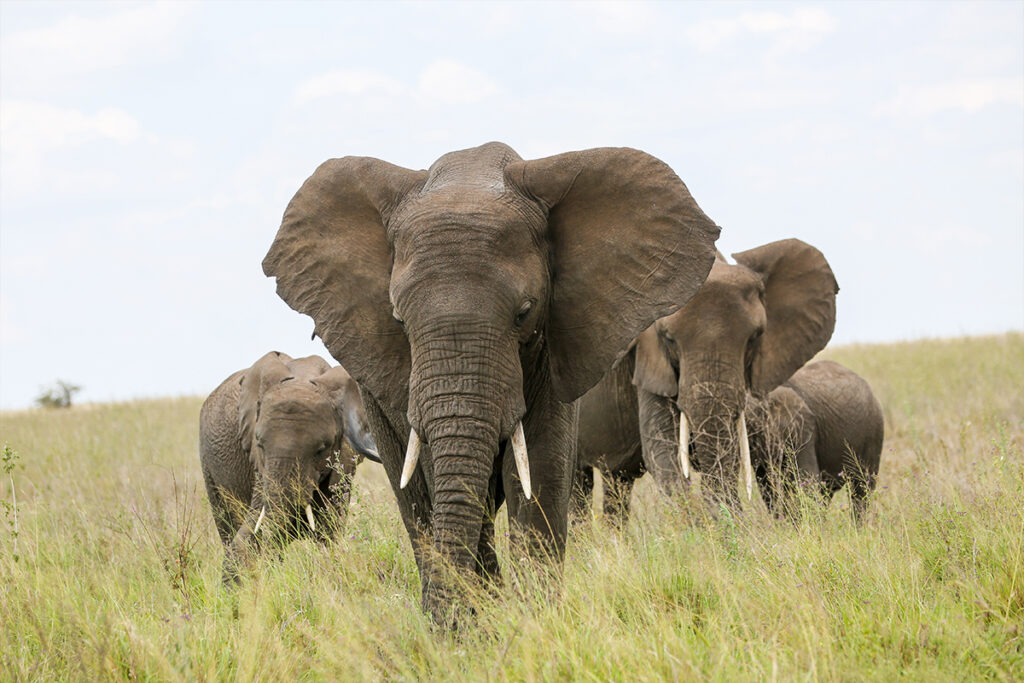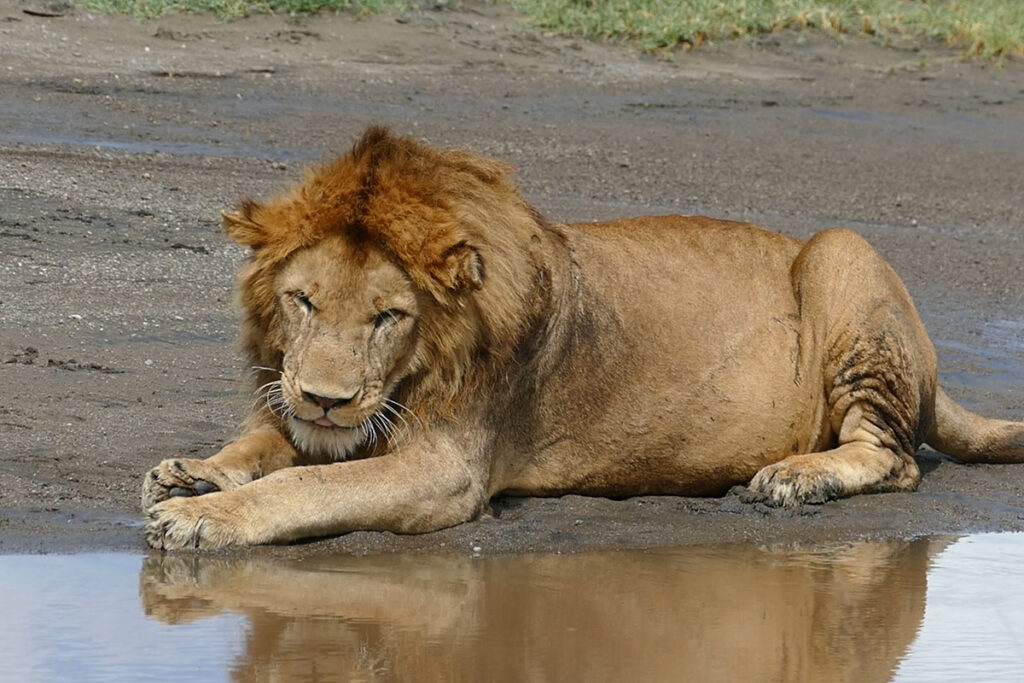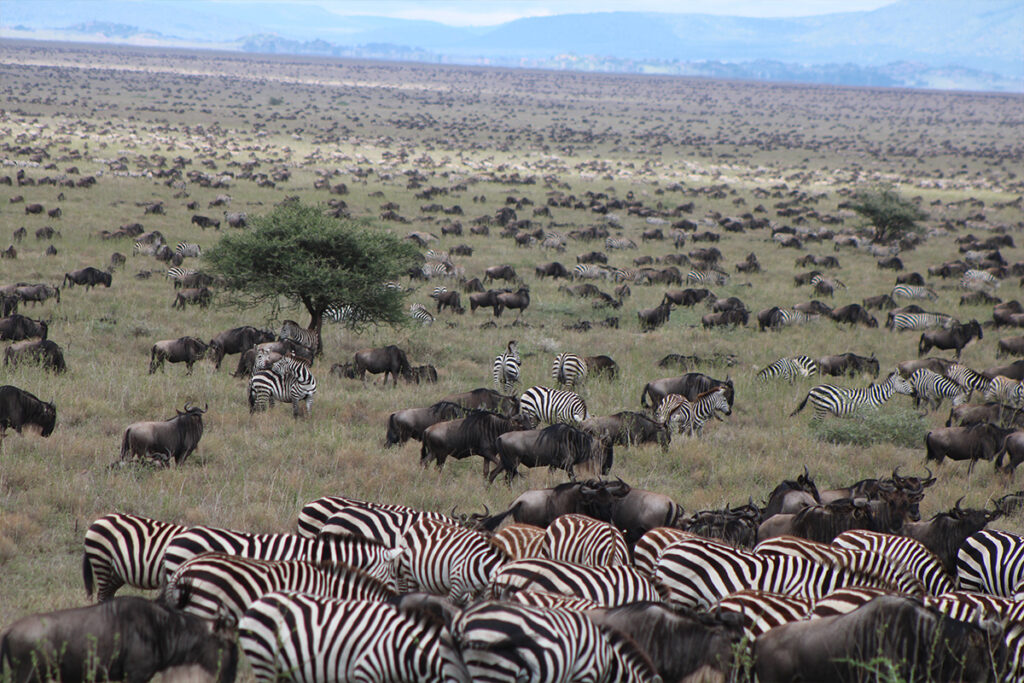The shadows of the Tanzanian savannah hold secrets undisturbed by the light of day, inviting those who dare to explore. A thrilling night game drive reveals a realm where elusive nocturnal creatures reign, such as prowling leopards and active bushbabies. It’s an unparalleled experience, where the quiet hum of night is filled with vibrant activity unseen elsewhere.
Night game drives in Tanzania offer an intricate insight into the behavioral patterns of its diverse wildlife. As a practice dating back to the late 20th century, these adventures have proven pivotal in ecological studies. With over 200 mammal species potentially visible under the moonlit sky, the drives serve as a powerful testament to Tanzania’s commitment to wildlife conservation and sustainable tourism.

Night Game Drive Tanzania: A Unique Safari Experience
In the African wilderness, nighttime unveils a different world teeming with life. Undertaking a night game drive in Tanzania offers adventurers a chance to witness what many never see. Nocturnal animals, like lions and hyenas, come alive under the starry skies. Night drives provide rare glimpses into their active night routines. It’s an opportunity to see animals engage in natural behaviors undisturbed by humans.
The vehicles used for these safaris are equipped with features perfect for night viewing. With expert guides leading the way, guests can navigate safely through the dark landscapes. Searchlights reveal the glowing eyes of creatures like bushbabies and nightjars. This approach helps protect both the animals and the tourists. Safety, after all, is a major priority during these night-time adventures.
Part of what makes these drives so special is the element of surprise. You never know which animal might pop into view next. It could be a leopard stealthily stalking its prey or an elephant wandering through the bush. The unpredictability adds to the excitement. The air is filled with the sounds of the night, creating an immersive experience.
Tanzania’s rich biodiversity is a significant draw for wildlife enthusiasts. A night game drive enhances this allure by offering a fresh perspective. The thrill of the unknown draws people from all over the world. Such experiences help tourists develop a deeper connection with nature. Observing nocturnal wildlife in their natural habitat is a truly unforgettable experience.
Fascinating Behaviors of Nocturnal Wildlife
In the cloak of darkness, a variety of animals emerge to commence their nocturnal rituals. Leopards, known for their stealth and agility, navigate silently through the bush in search of prey. These elusive felines use the cover of night to their advantage, often catching prey off guard. The bushbabies present another intriguing case; they leap effortlessly between trees, guided by large, luminous eyes. Their agility and sharp hearing aid in finding food, all contributing to their survival.
Owls, the silent hunters of the night sky, possess fascinating hunting techniques. Their wings are specially adapted to fly silently, allowing them to surprise their prey. Equipped with exceptional night vision and acute hearing, owls efficiently locate and capture food. Such adaptations make them effective predators despite the challenges darkness presents. Their varied diet includes small mammals, birds, and insects, showcasing their adaptability.
Insects like moths and fireflies use the nighttime to showcase unique behaviors as well. Moths are often drawn to light, which scientists believe is due to their navigation system being disrupted by artificial lights. Fireflies, on the other hand, use bioluminescence to attract mates, creating shimmering displays in the dark. Their light patterns are not just beautiful but also serve a vital purpose in reproduction. These behaviors highlight the complexity and wonders of nocturnal life.
Nocturnal animals have evolved behaviors that allow them to thrive under the cover of darkness. This includes enhanced senses, specialized hunting skills, and unique communication methods.
- Enhanced vision is crucial for navigating and hunting.
- Acute hearing allows detection of even the faintest sounds.
- Nighttime communication may involve sounds or light signals among species.
Such adaptations ensure their success and survival in a nighttime world often unseen by humans.
The Role of Night Game Drives in Wildlife Conservation
Night game drives in Tanzania play an important role in wildlife conservation. By observing animals during their nocturnal activities, researchers and conservationists gather valuable data. This information aids in understanding species behaviors, population dynamics, and health. Such insights lead to better protection and management strategies. It ensures that conservation efforts are well-informed and effective.
Additionally, night game drives educate and engage tourists, fostering a deeper appreciation for nocturnal wildlife. Tourists often become ambassadors for conservation after experiencing the fascinating night behaviors of these creatures. This increased awareness and interest translate to support for conservation initiatives. The funds generated through night safaris also bolster conservation projects. These contributions are vital in sustaining long-term conservation efforts.
Conservation through sustainable tourism is another significant benefit of night game drives. By limiting human activity to guided, responsible tours, the natural ecosystem faces less disruption. Well-regulated night drives ensure that wildlife habitats are preserved while still allowing for observation. This balance helps maintain the biodiversity of regions like Tanzania. Ulti ates in benefits for bot the environment and the tourism industry.
- Minimal environmental impact due to regulated tours
- Significant contribution to research and data collection
- Enhanced public awareness and education about nocturnal species
- Financial support for ongoing conservation projects
Night game drives have become a model of how tourism and conservation can complement each other. Influenced by responsible practices, they provide unforgettable experiences while supporting crucial conservation work. As more people engage in these drives, the momentum for wildlife protection continues to grow. Through both education and financial means, night game drives empower the push towards a sustainable future. They offer a glimpse into the art of preserving the wild in the modern world.
Brief History of Night Game Driving in Tanzania
Night game driving in Tanzania has roots tracing back to the late 20th century. Initially, safaris were limited to daytime excursions, focusing on observing animals in daylight. However, the rich nocturnal biodiversity remained largely unexplored. The introduction of night drives provided a new dimension to wildlife tourism and research. Early adopters of this practice quickly realized its potential in education and conservation.
The rise of night game drives was driven by the desire to gain deeper insights into animal behavior. Researchers and conservationists found that many species are most active at night. This led to better understanding of ecological dynamics and predator-prey relationships. Consequently, night drives became a tool for scientific discovery. They also enriched tourism experiences, offering unique adventures to visitors.
Over the years, the practice of night game drives has evolved to include more sophisticated methods. Modern vehicles are now equipped with advanced lighting and tracking technology. These innovations enhance both safety and observation accuracy for guides and tourists. Improved equipment makes the experience more immersive and informative. It ensures minimal disruption to wildlife while offering clear visibility.
As night game drives gained popularity, guidelines and regulations were established to protect wildlife. These measures include limiting the number of vehicles and setting specific routes to prevent habitat disturbance.
- Vehicle restrictions to minimize environmental impact
- Fixed routes to avoid sensitive areas
- Strict operating hours to respect animal routines
Such regulations reflect Tanzania’s commitment to maintaining ecological balance while promoting sustainable tourism.
The success of night game drives has inspired similar initiatives in other parts of Africa. Countries like Kenya and South Africa have adopted night safaris, enriching their wildlife tourism portfolios. These drives are a testament to Tanzania’s pioneering approach in blending tourism with conservation. By continuing to refine these practices, Tanzania sets a benchmark for ethical wildlife experiences globally. The history of night game drives illustrates the journey towards a more profound connection with nature.
What to Expect During a Night Game Drive in Tanzania
Embarking on a night game drive in Tanzania is an adventure filled with anticipation and excitement. As the sun sets, prepare for a journey through the pristine landscapes. The environment shifts as darkness unfolds, with the air becoming cooler and the sky filled with stars. Guides with keen expertise lead the way to ensure guests experience the nocturnal world safely. The drive starts with a detailed briefing about the guidelines and what species to watch for.
Expect to see a host of nocturnal animals active under the cloak of night. This includes predators like lions and leopards prowling in search of prey. Herbivores such as zebras and antelopes are also visible, gathering under the moonlight. Keen sensors and searchlights help highlight the glowing eyes and outlines of creatures in the bush. These encounters are thrilling and memorable.
The unique sounds of the night are part of what makes the experience so special. You may hear the distant roar of a lion or the eerie call of a nightjar. Your senses become more attuned as you navigate the dark. The guides often pause to explain the sounds and discuss the behavior of the animals. This adds depth to the wildlife learning experience.
Throughout the drive, comfort and safety are prioritized for all guests. Vehicles are equipped with necessary amenities, including blankets for warmth during cooler nights. Guides carry first aid kits and communication devices in case of emergencies. Safety protocols are strictly followed, ensuring minimal disturbance to the wildlife. Guests can enjoy the adventure with peace of mind.
Such drives not only offer excitement but also contribute to wildlife conservation. The insights gained from night safaris equip conservationists with valuable data on animal behavior. Guests often leave with a heightened appreciation for the natural world and a willingness to support conservation efforts. The integration of education and adventure sets these drives apart. A night game drive promises more than just a glimpse into the wild; it’s a step into nature’s nighttime narrative.
Key Takeaways
- Tanzania’s night game drives reveal active nocturnal wildlife behaviors.
- Expert guides use advanced equipment for safe, thrilling adventures.
- Visitors experience unique nighttime sounds and sights of the wild.
- Drives contribute valuable data to support wildlife conservation efforts.
- Nocturnal safaris enhance understanding and appreciation of natural ecosystems.



